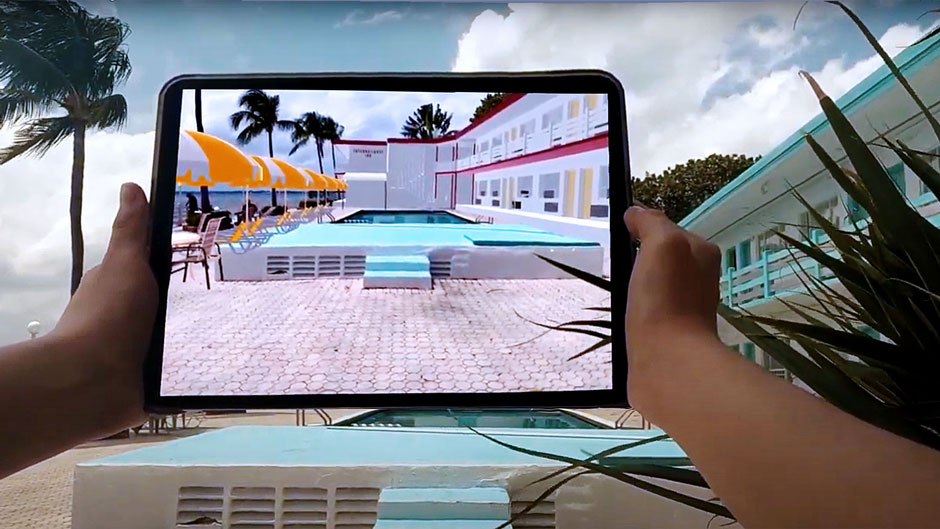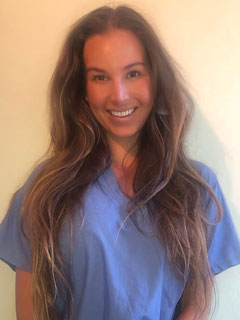
Not too far into the future, tourists may be able to visit a Miami historic hotel, grab a tablet or their phone, and use its camera to walk around and envision the hotel’s heyday, complete with authentic furniture, period-specific décor, and even music from the time.
And nursing students at the University of Miami may be able to enter a virtual operating room and interact with patients in a challenging, difficult airway situation that sometimes occurs when a patient is under general anesthesia.
These are the visions of two student led XR initiative projects, which will be supported by financial awards. Funded by the Office of the Provost, a total of four students from different disciplines each were awarded a $1,000 grant in January to delve into an area of their interest using extended reality (XR).
According to Kim Grinfeder, professor and chair of the Department of Interactive Media who also directs the University’s XR Initiative, students had to submit a proposal, get a faculty advisor, and form a team to help execute their vision. “So far, the results have been fantastic, and it has been a compelling learning experience for the students,” he said. “We will probably offer it again next fall.”
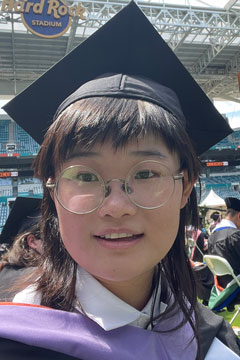
One recipient, Kelsey Boily, took three years off from her nursing career to earn a doctorate in nursing practice, which will soon allow her to work as a nurse anesthetist. As she finished her second year of classes, Boily noticed there were certain situations where it would be difficult to simulate the actual operating room experience, and she wanted to do something to help nurse anesthetists improve their practice. Guided by her advisor, assistant professor of nursing Greta Mitzova-Vladinov, who has worked on two virtual reality applications, she brainstormed a teachable scenario.
When a patient has what is called a challenging airway, Boily said that sometimes, they are already on anesthesia, creating a life-threatening situation to help them breathe. To better prepare future nurse anesthetists for this experience, Boily is working with a team of software engineers to create a virtual reality application where nursing students will encounter a patient with a difficult airway and the app will guide them in how to properly evaluate the patient.
“Difficult airways are very rare. But when this does happen, the probability of severe outcomes is pretty significant—up to 26 percent of patients end up dying. So I thought it was very important for nursing students to be aware of this,” she said. “Also, since it’s rare, almost none of us will have the opportunity to get hands-on experience in this scenario. So the goal of this app is to expose them to a virtual clinical environment that resembles a real-life situation and requires students to have the same clinical response.”
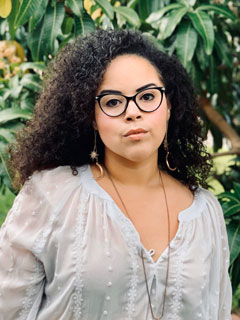
Although Boily’s app is still being finalized, she hopes to launch it with students in late August or early September.
Meanwhile, architecture graduate student Yayu Yan, with classmates Siying Cheng and Jiaxin Li, took a course this spring with lecturer Ruth Ron that introduced the trio to building design in virtual and augmented reality. As a case study, the class had to create an extended reality application for the International Inn, a historic hotel in northern Miami Beach. Yan, Cheng, and Li decided to create an augmented reality application where users can wave their phone or tablet camera over the current building and see what the hotel looked like in the 1960s, as well as into the future.
“This technology can help people envision building models in augmented reality, to see how large a building really is, and they can also go inside and see the interior,” said Yan, who graduated in May with a master’s degree in architecture. “This will be helpful because architects can use it to see what things will look like in true scale. Previously, architects would have to build a physical model that is small-scale, but with this you don’t need a physical model because you can have a virtual model and see it in 3D.”
Another XR Award recipient is Lorena Lopez Hechavarria, who was an interactive media master’s degree student who graduated in May. She reimagined the museum experience in virtual reality. Her project, “Beyond the Frame,” takes users into the setting of three landscape paintings from the Smithsonian’s Open Access Collections, offering them an immersive experience.
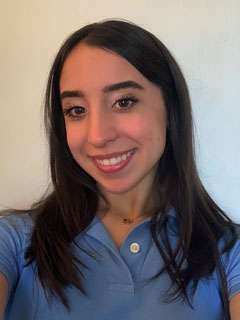
“I wanted to make the museum's collections accessible to as many people as possible in a new and engaging way, as the project is cross-platform and anyone with access to the internet can experience it,” Lopez Hechavarria said.
The fourth recipient, computer engineering junior Rebecca Camejo is working on an image recognition program, with the guidance of assistant professor Hammam Alsafrjalani, that will harness 5G technology and machine-learning techniques to quickly recognize objects in a room through augmented reality headsets. Camejo and Alsafrjalani now plan to take this technology—which is used in self-driving cars—and make it more efficient using 5G Edge capabilities. They also hope to enable multiple people wearing the headsets to recognize the same objects. “Our goal is to make this multiuser with a shared reality,” said Camejo.
Visit the XR Initiative website to learn more about the Provost XR Student Awards.
